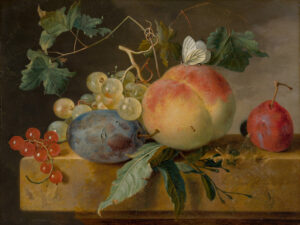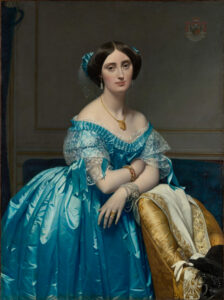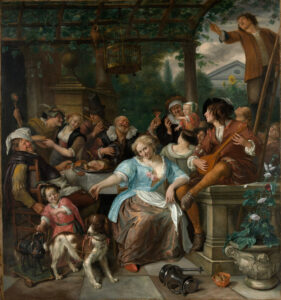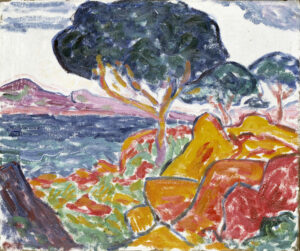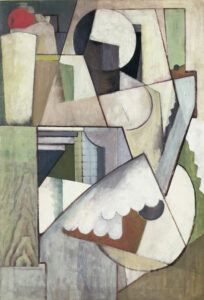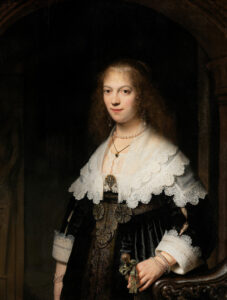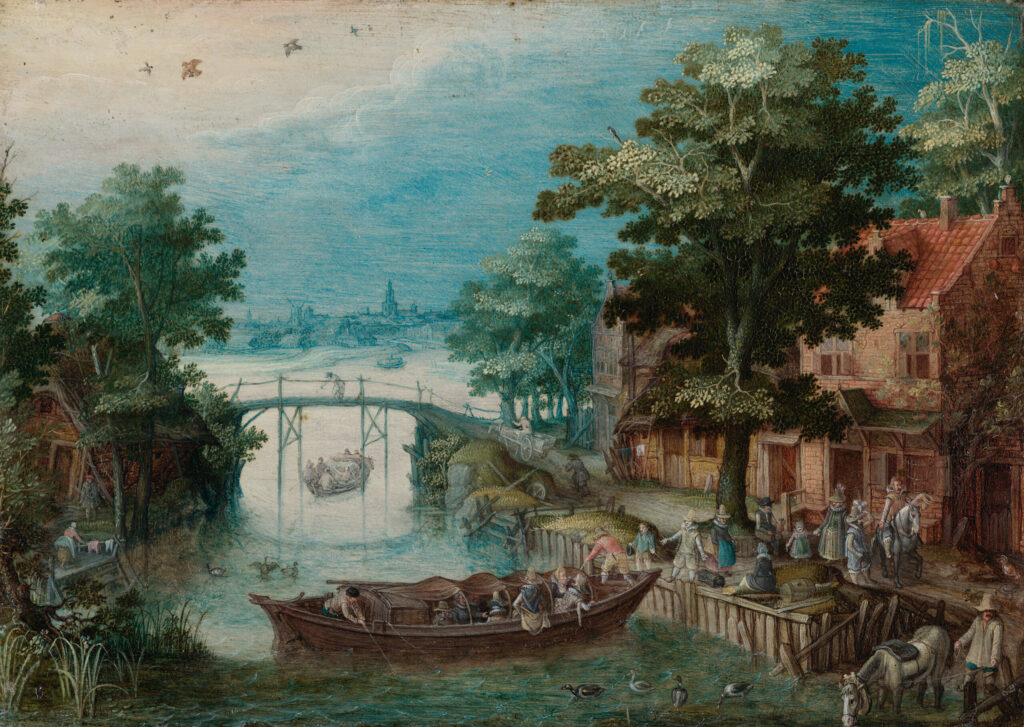
This Summer Landscape (circa 1615-1620) demonstrates the flourishing of Flemish landscape painting in the early 17th century.
Christoffel Van den Berghe presents an idyllic vision of summer rural life, characterized by descriptive precision inherited from the Northern tradition. The composition is organized around a riverside village where human activity harmonizes perfectly with the natural cycle. In the foreground, a boat laden with passengers evokes summer navigation, while a landing stage animated by figures in colorful costumes illustrates village activities. The vernacular architecture, with its tiled roofs and ochre facades, anchors the scene in Flemish reality. The summer luxuriance contrasts with the winter pendant of this seasonal series. Van den Berghe perfectly masters the art of atmospheric perspective, guiding the eye toward the distant town through a subtle interplay of successive planes. This aesthetic of everyday life appealed to the bourgeoisie, eager for these harmonious evocations.
Further information
- Christoffel Van den Berghe, Summer Landscape, circa 1615-1620
- 11.5 × 16.5 cm, oil on copper
- Mauritshuis, The Hague, displayed in Room 4
- https://www.mauritshuis.nl/en/our-collection/artworks/672-summer-landscape
Christoffel Van den Berghe (circa 1590-after 1628) belongs to the lineage of great Flemish landscape painters of the Antwerp School. Trained in the Bruegelian tradition, he developed a style characterized by meticulous observation of nature and seasonal human activities. Active primarily in Antwerp and Middelburg, Van den Berghe specialized in small-format landscapes, highly prized by the merchant bourgeoisie. His compositions, often organized in seasonal cycles, reveal a particular sensitivity to climatic variations and their repercussions on social life. Less well-known than his contemporaries Jan Brueghel the Younger or Joos de Momper, Van den Berghe nonetheless remains a valuable witness to Flemish art de vivre during the Golden Age.

